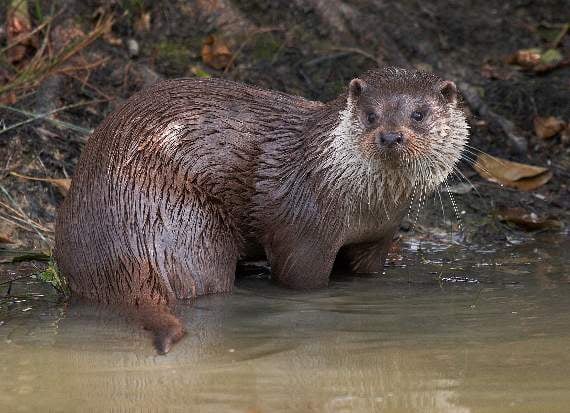THE elusive otter could soon be moving into Surrey and wildlife lovers are asked to become ‘Otter Spotters’ to help look out for these beautiful creatures on the county’s waterways.
Surrey Wildlife Trust believes we’re about to see a re-emergence of this much-loved mammal, as cleaner waters and habitat improvements encourage otters back into the county. It’s calling on the public to play otter detective and report back on any sightings or signs of the animals in Surrey.
“The species is expanding from strong-holds in the west and repopulating many parts of the UK,” said Surrey Wildlife Trust conservation officer Alex Learmont.
“Surrey is on the brink of this ‘recolonisation wave’ as otters have now moved into the neighbouring counties of Hampshire and Sussex, so we expect them to become residents in our county soon – it’s very exciting!”
The re-emergence of the otter was featured on BBC One’s Countryfile programme this week. It’s believed they are now present in every river in the UK – though they are very hard to spot.
Otters have been recorded within the last five years on the River Wey, the Tillingbourne and River Mole – but it’s thought these animals may have just been passing through. An ‘Otter Blitz’ carried out by trust volunteers at the end of 2016 surveyed for otters in the county, but none were found.
“Sadly we did not find any evidence of otters but that’s not to say they aren’t living in Surrey,” added Alex. “They are extremely shy animals with very large territories of up to 20km, so pinpointing exactly where they are can be difficult. But they could be on any of Surrey’s waterways, so please keep your eyes peeled – we’d love to hear about your sightings!”
If you want to be an Otter Spotter, here’s a checklist of what to look out for:
• Holts: underground dens can be found alongside waterways, usually under waterside trees or cavities in the bankside.
• Spraint: Otter poo! Used to mark territory, it’s black and tar-like when wet, but turns white and crumbly when older. Full of fish bones and has a distinctive smell.
• Paths and slides: Look out for muddy slides on river banks where the otter has slipped on its belly into the water.
• Footprints: Otter footprints are large and distinctive with five toes. You can sometimes see the webbing between toes in very soft mud or sand.
• Sighting: Otters are big animals, up to a metre long, with broad, dog-like heads and chunky tails. They swim low in the water, with just the top of their head and rump showing. When they dive, their long tail flips over and can be seen clearly out of the water.
Otters used to be widespread across the UK but numbers dropped drastically between the 1950s and 1970s due to pesticide poisoning, habitat destruction and hunting. They disappeared from large parts of the country - including Surrey.
Surrey Wildlife Trust is working closely with a number of partners in Surrey and neighbouring counties to help improve water quality, restore river banks and improve habitat for fish – 80 per cent of an otter’s diet is fish!
“Otters are part of our natural heritage and people love them,” added Alex. “They’re one of our largest carnivores and a top predator in freshwater habitats. But they can only exist where there is a good supply of fish and clean water, which indicates a healthy, functioning river - so we’d be thrilled if they returned to Surrey.”
If you’d like to train as a RiverSearch volunteer to help improve our waterways and carry out species surveys, visit the website www.surreywildlifetrust.org/riversearch. Any otter sightings or signs should be reported to jim.jones@sur
reywt.org.uk.
If you’re wild at heart and otterly in love, you could help Surrey Wildlife Trust’s work to conserve otter habitats by adopting an otter for your Valentine.
For more information visit the website www.surreywildlifetrust.org/adopt.





Comments
This article has no comments yet. Be the first to leave a comment.